Effect of Bio-Inspired Polymer Types on Engineering Characteristics of Cement Composites
Abstract
:1. Introduction
2. Materials and Methods
2.1. Materials
2.2. Synthesis of BIP
2.3. Mixing Proportions and Specimen Preparation
3. Results and Discussion
3.1. Characteristics of BIP
3.2. Fluidity and pH of Cement Mortars
3.3. Compressive Strength
3.4. Ultrasonic Pulse Velocity
3.5. Split-Tensile Strength
3.6. Drying Shrinkage
3.7. Carbonation Resistance
4. Conclusions
- The structure (non-crosslinked or crosslinked) of the BIPs depended on the pH conditions during the amidation reaction.
- The introduction of a new functional group, such as catechol and dicatechol dimer, as an additive to polymer backbones could improve the properties of cement mortar.
- After 28 days of aging, the compressive strength of the control sample was ~33.2 MPa. The incorporation of BIPs improved the compressive strength to the range of ~35.9–41.4 MPa. In particular, the highest compressive strength of ~41.4 MPa was exhibited by the a-BIP05 sample.
- The tensile strengths of the samples containing the BIPs were relatively higher than that of the control sample, similar to the trend observed for the compressive strength. In general, appropriate use of BIP was shown to be effective in improving the mechanical properties. In this study, the best results were obtained when 5% a-BIP was used.
- After 56 days, the drying shrinkages of the samples containing a-BIP were in the range of ~0.072–0.078%, lower than that of the control sample (~0.076%), except for the a-BIP20 sample (0.078%). When b-BIP was used, the drying shrinkage increased to ~0.081–0.099%, which was ~6.5–30.2% higher than that of the control sample.
- After 28 days of accelerated carbonation, the carbonation depth of the control sample was ~1.14 mm, and the carbonation depth inversely correlated to compressive strength. The lowest carbonation depth (0.99 mm), and therefore, the highest compressive strength was obtained in the sample with 5% a-BIP (a-BIP05).
Author Contributions
Funding
Institutional Review Board Statement
Informed Consent Statement
Data Availability Statement
Acknowledgments
Conflicts of Interest
References
- Saraswathy, V.; Song, H.W. Improving the Durability of Concrete by Using Inhibitors. Build. Environ. 2007, 42, 464–472. [Google Scholar] [CrossRef]
- Smaoui, N.; Bérubé, M.A.; Fournier, B.; Bissonnette, B.; Durand, B. Effects of Alkali Addition on the Mechanical Properties and Durability of Concrete. Cem. Concr. Res. 2005, 35, 203–212. [Google Scholar] [CrossRef]
- Richardson, A.; Coventry, K.; Bacon, J. Freeze/Thaw Durability of Concrete with Recycled Demolition Aggregate Compared to Virgin Aggregate Concrete. J. Clean. Prod. 2011, 19, 272–277. [Google Scholar] [CrossRef]
- Zhang, Y.; van de Ven, M.; Molenaar, A.; Wu, S. Preventive Maintenance of Porous Asphalt Concrete Using Surface Treatment Technology. Mater. Des. 2016, 99, 262–272. [Google Scholar] [CrossRef]
- Yang, S.T.; Li, K.F.; Li, C.Q. Numerical Determination of Concrete Crack Width for Corrosion-Affected Concrete Structures. Comput. Struct. 2018, 207, 75–82. [Google Scholar] [CrossRef] [Green Version]
- Adhikari, R.S.; Moselhi, O.; Bagchi, A. Image-Based Retrieval of Concrete Crack Properties for Bridge Inspection. Autom. Constr. 2014, 39, 180–194. [Google Scholar] [CrossRef]
- Nehdi, M.; Duquette, J.; El Damatty, A. Performance of Rice Husk Ash Produced Using a New Technology as a Mineral Admixture in Concrete. Cem. Concr. Res. 2003, 33, 1203–1210. [Google Scholar] [CrossRef]
- Liu, J.; Wang, D. Influence of Steel Slag-Silica Fume Composite Mineral Admixture on the Properties of Concrete. Powder Technol. 2017, 320, 230–238. [Google Scholar] [CrossRef]
- Choi, S.J.; Kim, J.H.; Bae, S.H.; Oh, T.G. Strength, Drying Shrinkage, and Carbonation Characteristic of Amorphous Metallic Fiber-Reinforced Mortar with Artificial Lightweight Aggregate. Materials 2020, 13, 4451. [Google Scholar] [CrossRef]
- Choi, S.J.; Bae, S.H.; Lee, J.I.; Bang, E.J.; Ko, H.M. Strength, Carbonation Resistance, and Chloride-Ion Penetrability of Cement Mortars Containing Catechol-Functionalized Chitosan Polymer. Materials 2021, 14, 6395. [Google Scholar] [CrossRef]
- Ismail, N.; Ingham, J.M. In-Plane and Out-of-Plane Testing of Unreinforced Masonry Walls Strengthened Using Polymer Textile Reinforced Mortar. Eng. Struct. 2016, 118, 167–177. [Google Scholar] [CrossRef]
- Jo, B.W.; Park, S.K.; Park, J.C. Mechanical Properties of Polymer Concrete Made with Recycled PET and Recycled Concrete Aggregates. Constr. Build. Mater. 2015, 195, 2191–2198. [Google Scholar] [CrossRef]
- Wongpa, J.; Kiattikomol, K.; Jaturapitakkul, C.; Chindaprasirt, P. Compressive Strength, Modulus of Elasticity, and Water Permeability of Inorganic Polymer Concrete. Mater. Des. 2010, 31, 4748–4754. [Google Scholar] [CrossRef]
- Bărbuţă, M.; Harja, M.; Baran, I. Comparison of Mechanical Properties for Polymer Concrete with Different Types of Filler. J. Mater. Civ. Eng. 2010, 22, 696–701. [Google Scholar] [CrossRef]
- Jafari, K.; Tabatabaeian, M.; Joshaghani, A.; Ozbakkaloglu, T. Optimizing the Mixture Design of Polymer Concrete: An Experimental Investigation. Constr. Build. Mater. 2018, 167, 185–196. [Google Scholar] [CrossRef]
- Douba, A.; Emiroglu, M.; Kandil, U.F.; Taha, M.M.R. Very ductile polymer concrete using carbon nanotubes. Constr. Build. Mater. 2019, 196, 468–477. [Google Scholar] [CrossRef]
- Ferdous, W.; Manalo, A.; Wong, H.S.; Abousnina, R.; AlAjarmeh, O.S.; Zhuge, Y.; Schubel, P. Optimal Design for Epoxy Polymer Concrete Based on Mechanical Properties and Durability Aspects. Constr. Build. Mater. 2020, 232, 117229. [Google Scholar] [CrossRef]
- Zahra, T.; Dhanasekar, M. Characterisation of Cementitious Polymer Mortar– Auxetic Foam Composites. Constr. Build. Mater. 2017, 147, 143–159. [Google Scholar] [CrossRef] [Green Version]
- Hameed, A.M.; Hamza, M.T. Characteristics of Polymer Concrete Produced from Wasted Construction Materials. Energy Procedia. 2019, 157, 43–50. [Google Scholar] [CrossRef]
- Chakraborty, S.; Kundu, S.P.; Roy, A.; Adhikari, B.; Majumder, S.B. Polymer Modified Jute Fibre as Reinforcing Agent Controlling the Physical and Mechanical Characteristics of Cement Mortar. Constr. Build. Mater. 2013, 49, 214–222. [Google Scholar] [CrossRef]
- Gorninski, J.P.; Molin, D.C.D.; Kazmierczak, C.S. Study of the Modulus of Elasticity of Polymer Concrete Compounds and Comparative Assessment of Polymer Concrete and Portland Cement Concrete. Cem. Con. Res. 2004, 34, 2091–2095. [Google Scholar] [CrossRef]
- Asdollah-Tabar, M.; Heidari-Rarani, M.; Aliha, M.R.M. The Effect of Recycled PET Bottles on the Fracture Toughness of Polymer Concrete. Compos. Commun. 2021, 25, 100684. [Google Scholar] [CrossRef]
- Heidarnezhad, F.; Jafari, K.; Ozbakkaloglu, T. Effect of Polymer Content and Temperature on Mechanical Properties of Lightweight Polymer Concrete. Constr. Build. Mater. 2020, 260, 119853. [Google Scholar] [CrossRef]
- Lokuge, W.; Aravinthan, T. Effect of Fly Ash on the Behaviour of Polymer Concrete with Different Types of Resin. Mater. Des. 2013, 51, 175–181. [Google Scholar] [CrossRef]
- Niaki, M.H.; Fereidoon, A.; Ahangari, M.G. Experimental Study on the Mechanical and Thermal Properties of Basalt Fiber and Nanoclay Reinforced Polymer Concrete. Compos. Struct. 2018, 191, 231–238. [Google Scholar] [CrossRef]
- Wang, J.; Dai, Q.; Guo, S.; Si, R. Mechanical and Durability Performance Evaluation of Crumb Rubber-Modified Epoxy Polymer Concrete Overlays. Constr. Build. Mater. 2019, 203, 469–480. [Google Scholar] [CrossRef]
- Mohesson, H.M.; Abbas, W.A. Effect of Biopolymer Alginate on Some Properties of Concrete. J. Eng. 2020, 26, 121–131. [Google Scholar] [CrossRef]
- Amiji, M.M. Pyrene Fluorescence Study of Chitosan Self-Association in Aqueous Solution. Carbohydr. Polym. 1995, 26, 211–213. [Google Scholar] [CrossRef]
- Ottøy, M.H.; Vårum, K.M.; Christensen, B.E.; Anthonsen, M.W.; Smidsrød, O. Preparative and Analytical Size-Exclusion Chromatography of Chitosans. Carbohydr. Polym. 1996, 31, 253–261. [Google Scholar] [CrossRef]
- Schatz, C.; Viton, C.; Delair, T.; Pichot, C.; Domard, A. Typical Physicochemical Behaviors of Chitosan in Aqueous Solution. Biomacromolecules 2003, 4, 641–648. [Google Scholar] [CrossRef]
- Suzuki, K.; Mikami, T.; Okawa, Y.; Tokoro, A.; Suzuki, S.; Suzuki, M. Antitumor Effect of Hexa-N-acetylchitohexaose and Chitohexaose. Carbohydr. Res. 1986, 151, 403–408. [Google Scholar] [CrossRef]
- Choi, B.K.; Kim, K.Y.; Yoo, Y.J.; Oh, S.J.; Choi, J.H.; Kim, C.Y. In Vitro Antimicrobial Activity of a Chitooligosaccharide Mixture Against Actinobacillus actinomycetemcomitans and Streptococcus mutans. Int. J. Antimicrob. Agents. 2001, 18, 553–557. [Google Scholar] [CrossRef]
- Park, N.Y.; Lee, S.H.; Meyers, S.P. Antibacterial Activity of Chitosans and Chitosan Oligomers with Different Molecular Weights. Int. J. Food Microbiol. 2002, 74, 65–72. [Google Scholar] [CrossRef]
- Omura, Y.; Shigemoto, M.; Akiyama, T.; Saimoto, H.; Shigemasa, Y.; Nakamura, I.; Tsuchido, T. Antimicrobial Activity of Chitosan with Different Degrees of Acetylation and Molecular Weights. Biocontrol Sci. 2003, 8, 25–30. [Google Scholar] [CrossRef] [Green Version]
- Hu, Y.; Du, Y.; Yang, J.; Kennedy, J.F.; Wang, X.; Wang, L. Synthesis, Characterization and Antibacterial Activity of Guanidinylated Chitosan. Carbohydr. Polym. 2007, 67, 66–72. [Google Scholar] [CrossRef]
- Hu, Y.; Du, Y.; Yang, J.; Tang, Y.; Li, J.; Wang, X. Self-Aggregation and Antibacterial Activity of N-Acylated Chitosan. Polymer 2007, 48, 3098–3106. [Google Scholar] [CrossRef]
- Shin, M.; Park, S.G.; Oh, B.C.; Kim, K.; Jo, S.; Lee, M.S.; Oh, S.S.; Hong, S.H.; Shin, E.C.; Kim, K.S.; et al. Complete Prevention of Blood Loss with Self-Sealing Haemostatic Needles. Nat. Mater. 2017, 16, 147–152. [Google Scholar] [CrossRef]
- Shin, M.; Ryu, J.H.; Kim, K.; Kim, M.J.; Jo, S.; Lee, M.S.; Lee, D.Y.; Lee, H.Y. Hemostatic Swabs Containing Polydopamine-Like Catecholamine Chitosan-Catechol for Normal and Coagulopathic Animal Models. ACS Biomater. Sci. Eng. 2018, 4, 2314–2318. [Google Scholar] [CrossRef]
- Ryu, J.H.; Lee, Y.; Kong, W.H.; Kim, T.G.; Park, T.G.; Lee, H. Catechol-Functionalized Chitosan/Pluronic Hydrogels for Tissue Adhesives and Hemostatic Materials. Biomacromolecules 2011, 12, 2653–2659. [Google Scholar] [CrossRef]
- Xu, J.; Strandman, S.; Zhu, J.X.X.; Barralet, J.; Cerruti, M. Genipin-Crosslinked Catechol-Chitosan Mucoadhesive Hydrogels for Buccal Drug Delivery. Biomaterials 2015, 37, 395–404. [Google Scholar] [CrossRef]
- Ha, N.S.; Lu, G. A Review of Recent Research on Bio-Inspired Structures and Materials for Energy Absorption Applications. Compos. B Eng. 2020, 181, 107496. [Google Scholar] [CrossRef]
- Lee, H.A.; Park, E.; Lee, H. Polydopamine and Its Derivative Surface Chemistry in Material Science: A Focused Review for Studies at KAIST. Adv. Mater. 2020, 32, e1907505. [Google Scholar] [CrossRef]
- Ryu, J.H.; Choi, J.S.; Park, E.S.; Eom, M.R.; Jo, S.G.; Lee, M.S.; Kwon, S.K.; Lee, H. Chitosan Oral Patches Inspired by Mussel Adhesion. J. Control Release 2020, 317, 57–66. [Google Scholar] [CrossRef] [PubMed]
- Narkar, A.R.; Cannon, E.; Yildirim-Alicea, H.; Ahn, K. Catechol-Functionalized Chitosan: Optimized Preparation Method and Its Interaction with Mucin. Langmuir 2019, 35, 16013–16023. [Google Scholar] [CrossRef] [PubMed]
- KS L 5105; Testing Method for Compressive Strength of Hydraulic Cement Mortars. Korea Industrial Standards. Korean Standards & Certification Information Center: Seoul, Korea, 2007.
- KS F 2423; Standards Test Method for Tensile Splitting Strength of Concrete. Korea Industrial Standards. Korean Standards & Certification Information Center: Seoul, Korea, 2016.
- KS F 2424; Standard Test Method for Length Change of Mortar and Concrete. Korea Industrial Standards. Korean Standards & Certification Information Center: Seoul, Korea, 2015.
- KS F 2584; Standard Test Method for Accelerated Carbonation of Concrete. Korea Industrial Standards. Korean Standards & Certification Information Center: Seoul, Korea, 2015.
- Ahn, B.K. Perspectives on Mussel-Inspired Wet Adhesion. J. Am. Chem. Soc. 2017, 139, 10166–10171. [Google Scholar] [CrossRef] [PubMed] [Green Version]
- Yang, J.; Cohen Stuart, M.A.C.; Kamperman, M. Jack of All Trades: Versatile Catechol Crosslinking Mechanisms. Chem. Soc. Rev. 2014, 43, 8271–8298. [Google Scholar] [CrossRef]
- Lee, B.P.; Dalsin, J.L.; Messersmith, P.B. Synthesis and Gelation of DOPA-Modified Poly (Ethylene Glycol) Hydrogels. Biomacromolecules 2002, 3, 1038–1047. [Google Scholar] [CrossRef]
- Choi, H.Y.; Bae, S.H.; Choi, S.J.; Ko, H.M. Synthesis of Catechol-conjugated Chitosan and Its Application as an Additive for Cement mortar. Bull. Korean Chem. Soc 2022, 43, 83–87. [Google Scholar] [CrossRef]
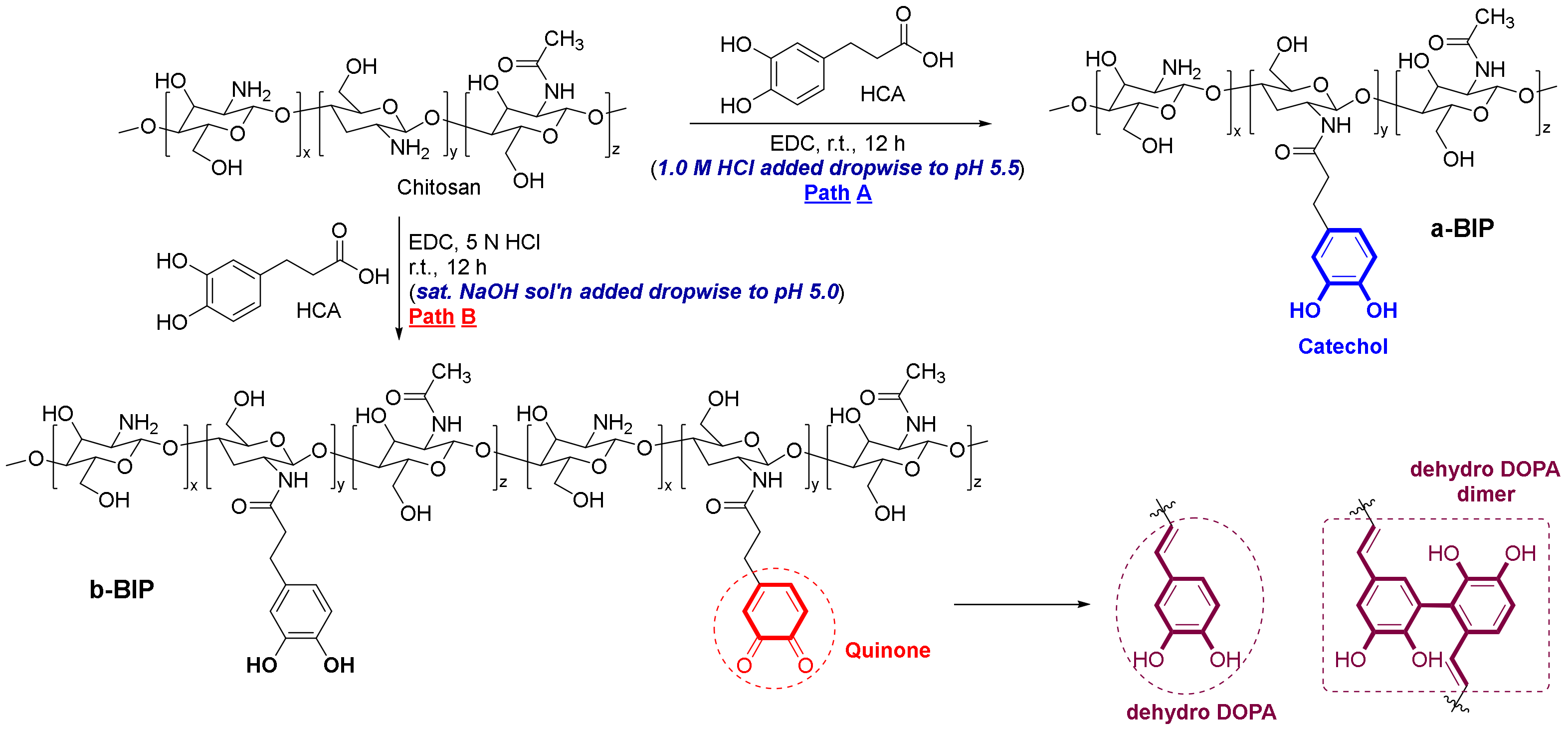
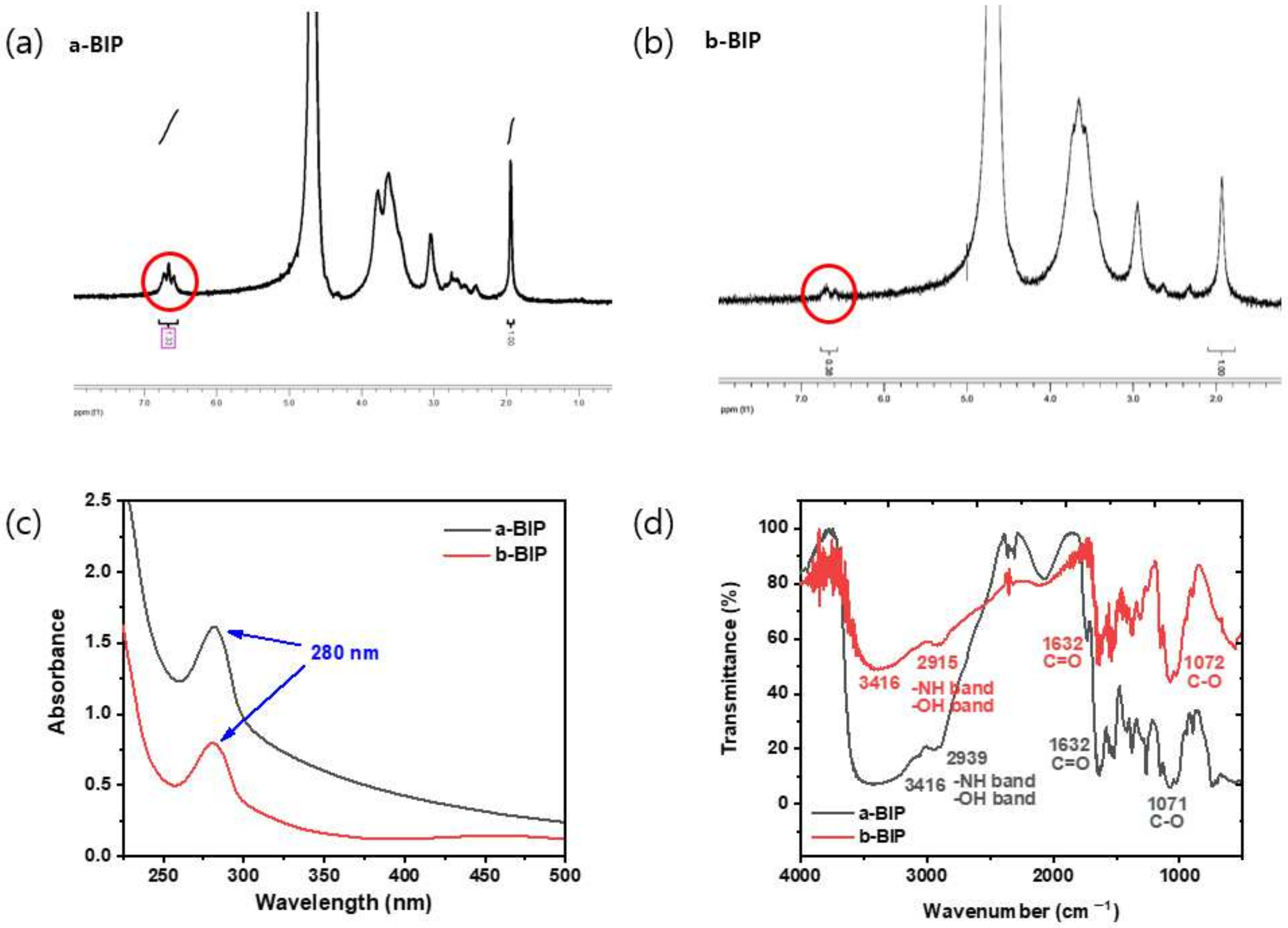
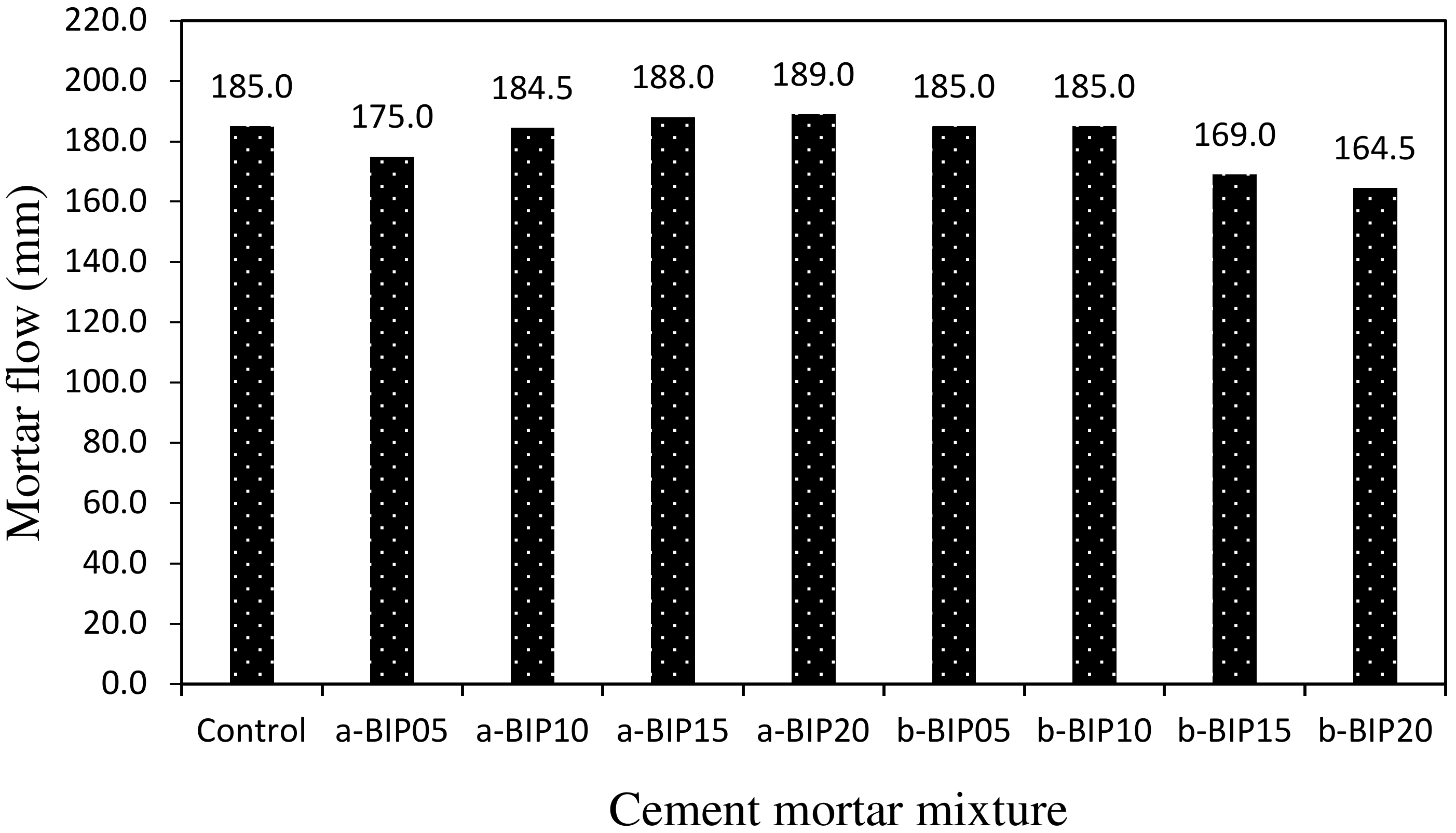


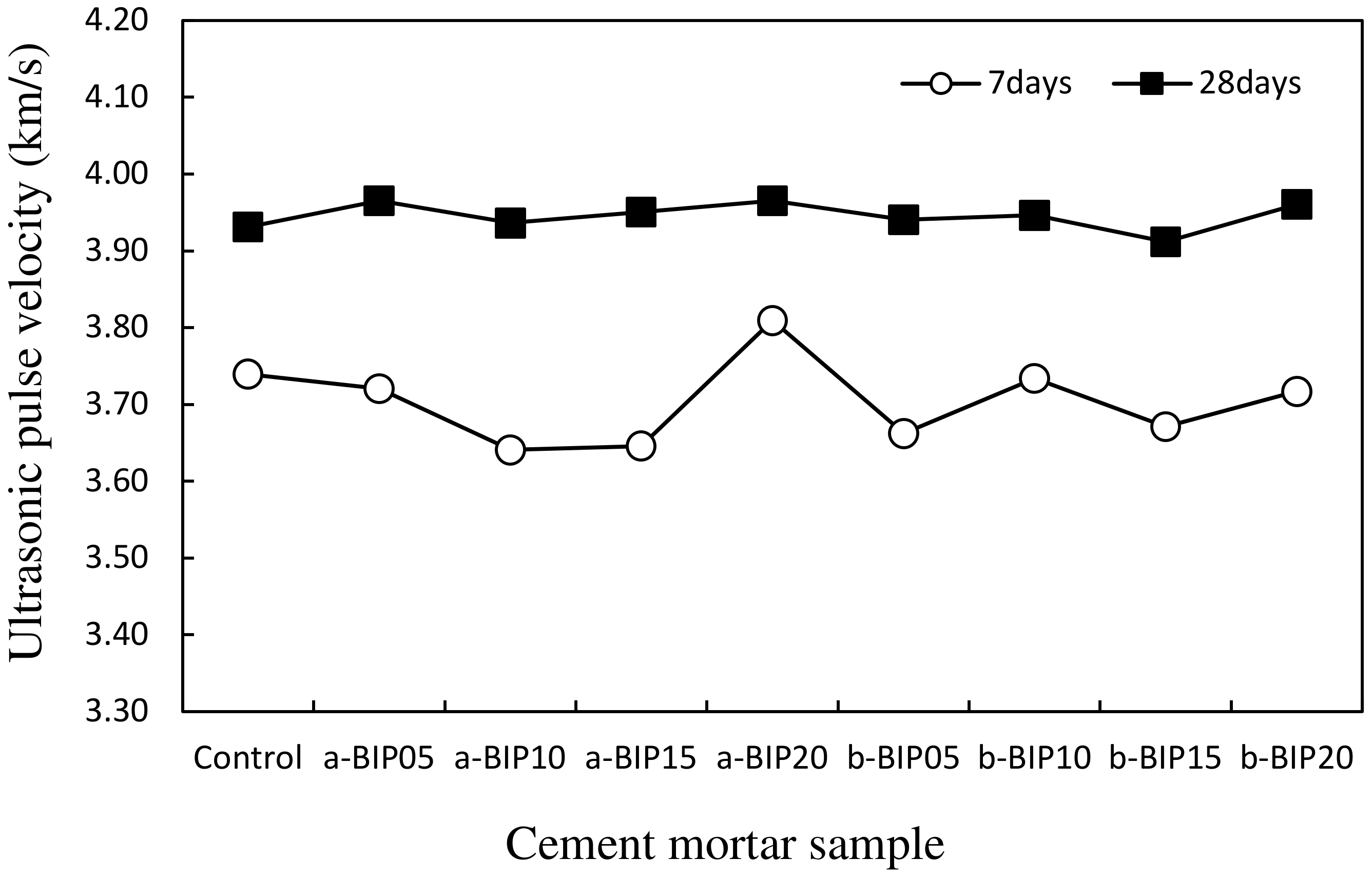
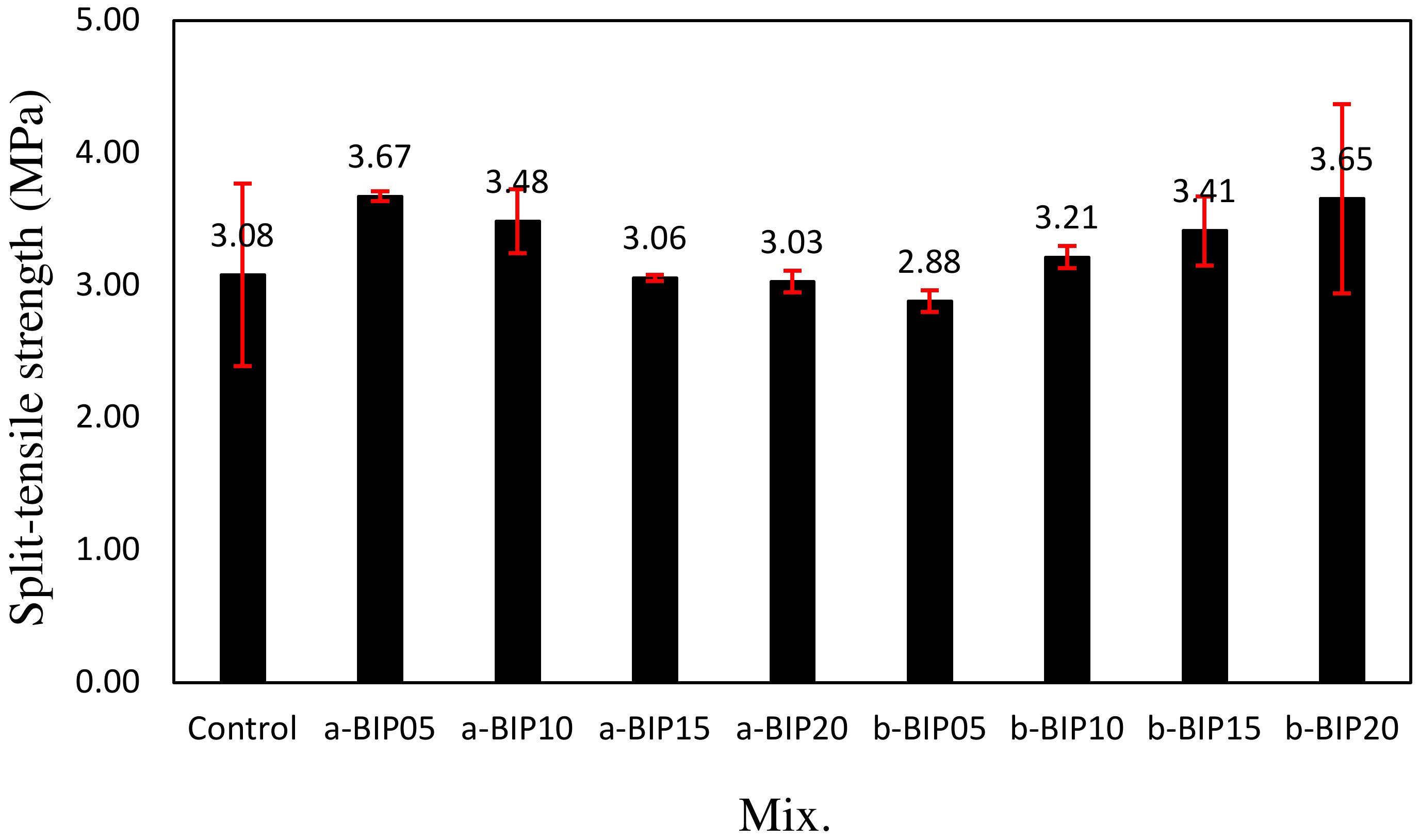

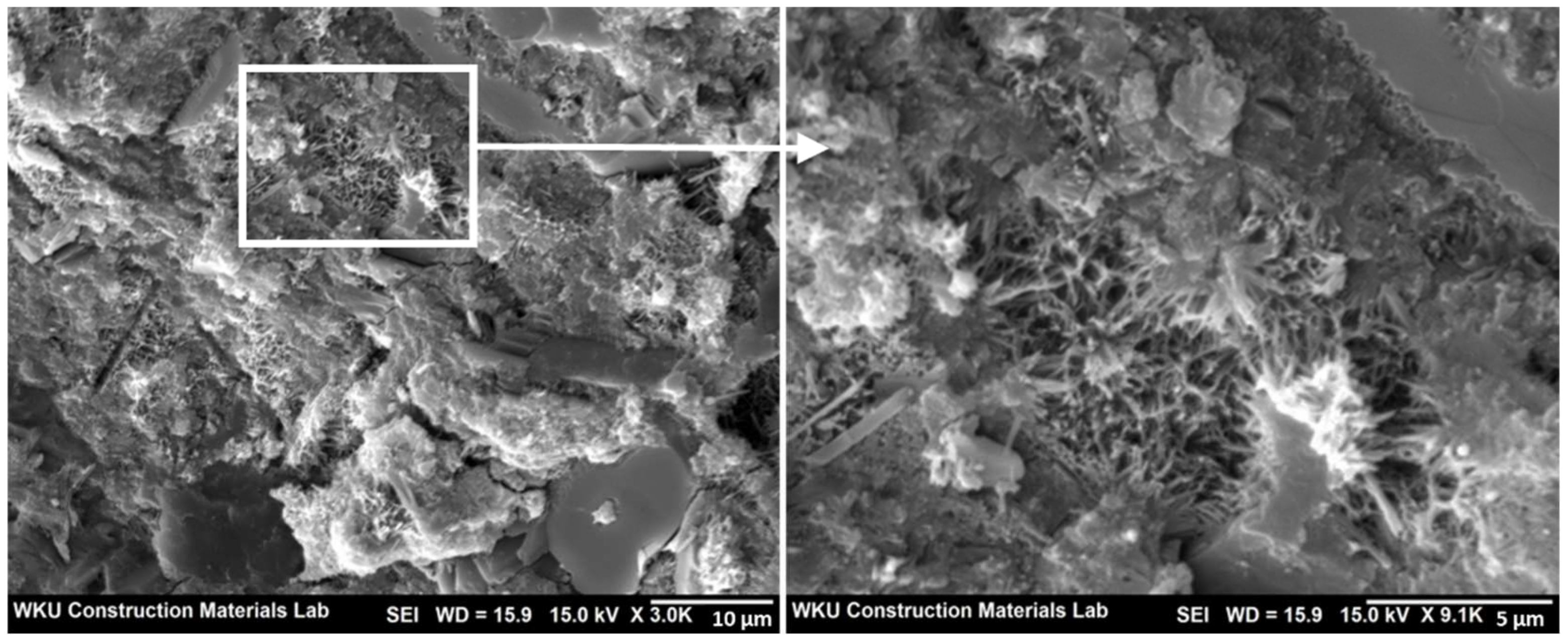
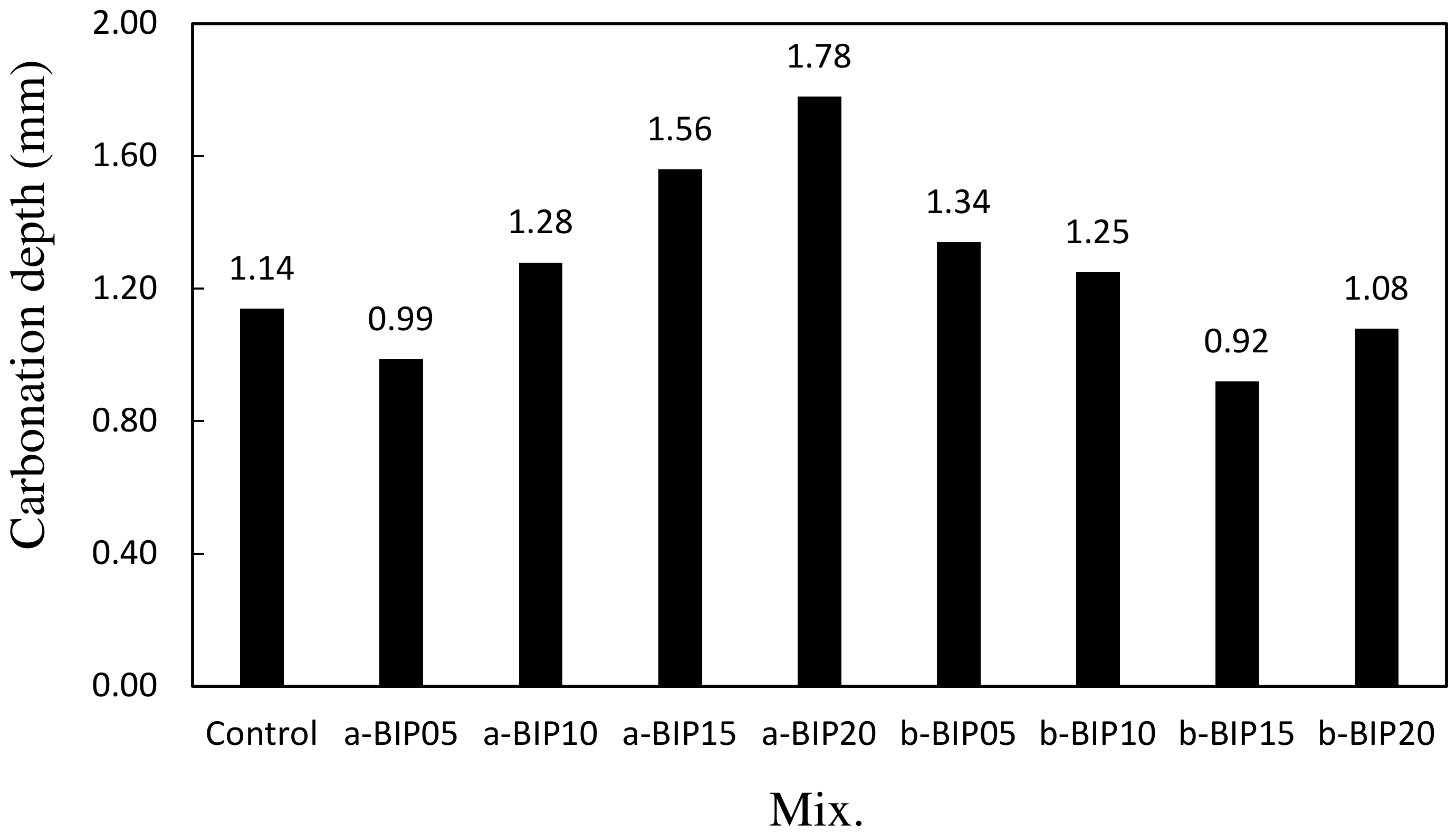
| Mix | a-BIP | b-BIP | W/C | Water | Cement | Sand |
|---|---|---|---|---|---|---|
| (%) | (%) | (%) | (kg/m3) | (kg/m3) | (kg/m3) | |
| Control | - | - | 50 | 170 | 340 | 739 |
| a-BIP05 | 5 | - | ||||
| a-BIP10 | 10 | - | ||||
| a-BIP15 | 15 | - | ||||
| a-BIP20 | 20 | - | ||||
| b-BIP05 | - | 5 | ||||
| b-BIP10 | - | 10 | ||||
| b-BIP15 | - | 15 | ||||
| b-BIP20 | - | 20 |
Publisher’s Note: MDPI stays neutral with regard to jurisdictional claims in published maps and institutional affiliations. |
© 2022 by the authors. Licensee MDPI, Basel, Switzerland. This article is an open access article distributed under the terms and conditions of the Creative Commons Attribution (CC BY) license (https://creativecommons.org/licenses/by/4.0/).
Share and Cite
Choi, S.-J.; Bae, S.-H.; Lee, J.-I.; Bang, E.J.; Choi, H.Y.; Ko, H.M. Effect of Bio-Inspired Polymer Types on Engineering Characteristics of Cement Composites. Polymers 2022, 14, 1808. https://doi.org/10.3390/polym14091808
Choi S-J, Bae S-H, Lee J-I, Bang EJ, Choi HY, Ko HM. Effect of Bio-Inspired Polymer Types on Engineering Characteristics of Cement Composites. Polymers. 2022; 14(9):1808. https://doi.org/10.3390/polym14091808
Chicago/Turabian StyleChoi, Se-Jin, Sung-Ho Bae, Jae-In Lee, Eun Ji Bang, Hoe Young Choi, and Haye Min Ko. 2022. "Effect of Bio-Inspired Polymer Types on Engineering Characteristics of Cement Composites" Polymers 14, no. 9: 1808. https://doi.org/10.3390/polym14091808







